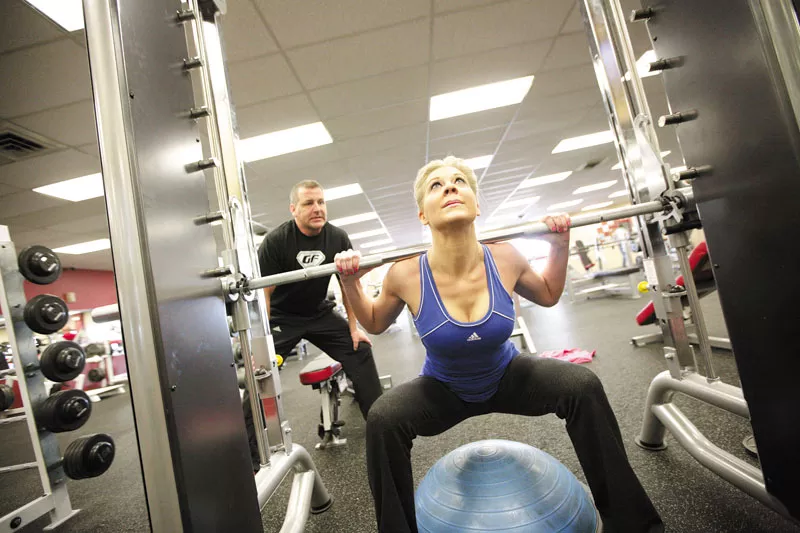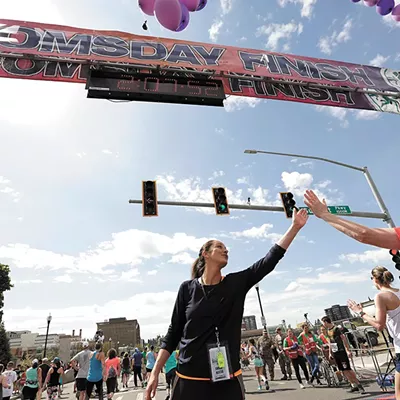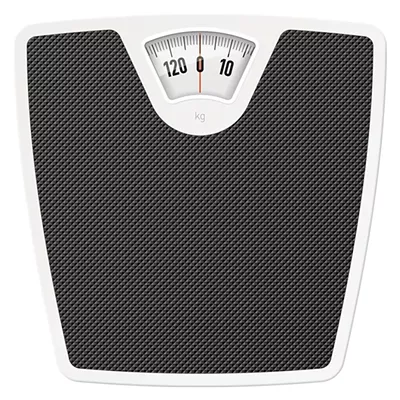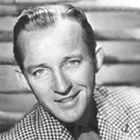It’s not easy staying fit in this world. Everyone knows the benefits — looking good, being healthy, having more energy — but everyone also knows the excuses. You’re way too busy, way too tired. You’ll start a new plan next week. Really, you mean it this time.
About half the people who embark on a fitness plan will drop out within six months, says Sarah Ullrich-French, an assistant professor at Washington State University who studies exercise psychology and motivation theory.
“Instead of making a lifestyle change,” she says, “they’re trying to do one thing.” The good news is that making a fitness plan and sticking with it isn’t impossible — we’re just not doing it right. We asked local trainers and experts about how to set yourself up for fitness success.
1.MAKE SURE IT FITS
With a whole range of classes, gym memberships and trendy programs out there, it can be hard to know where to begin. And despite what the infomercials may promise, there is no one magic program.
“We’re all different, so you can’t just say that this is good for everybody,” says Giorgio Usai Sr., the owner of Giorgio’s Fitness in Spokane Valley.
Lots of people show up at the beginning of January and hop on a treadmill thinking all their problems will be solved, he says. But there’s a reason working with a trainer can help you make progress more quickly. It’s just like learning a new language or a new instrument, he says.
“If you want to learn how to play the guitar, you buy the guitar first and maybe you play with it a little,” he says. “But then you have to get a coach or a teacher, or take lessons.”
Jeff Campbell, a certified personal trainer, says his clients always start with a screening to assess the person’s current fitness level. “A lot of times that’s a real eye-opener for people,” he says.
Clients who feel a little out of shape may be surprised to weigh in at almost 300 pounds. Facing that reality motivates them to work out more often than the once-a-week sessions they’d been planning.
It’s important to be honest with yourself about where you’re starting from, says Shawn Brow of South Perry Yoga. It’s easy to get discouraged — or injured — if you leap into a program you’re not ready for. “You need to be really realistic at the beginning,” she says. “Sometimes you can bite off more than you can chew.”
2. TRY SOMETHING NEW, but…
It’s good to try out new fitness trends or new activities, as long as you don’t give up too quickly. For example, Brow says, disliking one yoga class you tried one time doesn’t mean you don’t like yoga — you just might need to explore a little more to find the class you enjoy most. Even within a single yoga studio, some instructors lead with a more physical style while others may emphasize the meditative aspects. “You have to find a type of class and an instructor that rings true for you,” Brow says.
Even if you find a program that works for you, switching up the routine isn’t just about avoiding boredom — it’s also gets you more fit. Danna Snow, a personal trainer who runs boot camp classes for women, says doing the same exact routine over and over just adjusts your body to that routine. “Then you’ll plateau,” she says, “and you won’t make any more progress.”
If it sounds daunting to get yourself out of bed and come up with a whole new way to challenge yourself, that’s where joining a class can be a big help. The appeal of a boot camp class is essentially the same as Zumba or other classes led by instructors, Snow says. “You just have to go to the class and do what you’re told to do, which people love.”
At Giorgio’s Fitness, Usai says they rearrange the equipment every once in a while to keep things interesting. But he’s also glad to see that people pick up new activities outside the gym once they start feeling more fit and energetic. “We’re not talking just a gym, I’m talking a lifestyle,” he says. “If the gym gets you going, that’s great. If the mountain bike gets you going, that’s also great.”
3. SET BETTER GOALS
We’re not always very good at reaching our goals, Ullrich-French says, because we’re not good at setting them. The common goal to “lose weight” is much too vague, she says. “They don’t say when, how, how much. They’re not giving themselves tangible markers that will help them see progress and feel successful.”
Ullrich-French teaches that goals should be SMART — Specific, Measurable, Attainable, Realistic and Time-based — so you can actually tell when you’re achieving them.
It’s a mistake to plan your goals around the scale, Usai says. Your weight can fluctuate three or four pounds just with water changes. “If that’s the biggest thing on your program, the scale, it’s going to be a big letdown,” he says. “The mirror, and how you feel, is going to dictate whether your program is working or not.”
It’s also a mistake to start off with a daunting goal like going to the gym six days a week, Usai says. “You’re not going to be hungry or desire the gym at all after four continuous days of working out,” he says. “You need the recovery, and you need to be excited about coming back to the gym.”
You’re better off starting with a manageable schedule, like three days a week, and making those days a solid commitment, he says. No canceling to have lunch with friends. No rescheduling because something else comes up.
“Those days are gym-first and everything else second, because you are trying to better yourself,” he says.
And though it can help keep you accountable if you tell other people about your goals, Usai says he’s seen some of the most powerful success stories from people who quietly focus on taking one step at a time. “If you spend more time in telling people how you’re going to do this and that,” he says, “you’re not on the machine doing what you’re supposed to be doing.”
Setting smaller goals on the way to your big goal is the key to staying motivated, Ullrich-French says. “It’s like the little carrot in front of you — it’s what gets you out the door in the morning,” she says.
Snow suggests a good carrot could be signing up for a fun run a couple of months down the road. It gives you a specific date to aim for, and you can look forward to seeing how much progress you’ve already made.
4. UPGRADE YOUR FUEL
It turns out you can follow your exercise schedule perfectly and still sabotage your fitness plan with poor nutrition. Most trainers say they spend a lot of time fighting the myth that you can eat whatever you want as long as you exercise.
“The one thing we can’t control as instructors is what you put in your mouth,” Snow says. Even people who want to make positive changes mistakenly think tiny things — like switching from a regular latte to sugar-free — are going to be enough.
“Unless you have awesome genetics, it’s really hard to exercise your way out of bad habits,” Campbell says. Some people can take dramatic steps and quit junk food cold turkey, but others are more successful with a few small changes — no soda, no cookies, less wine — and working more gradually toward better nutrition.
“You can make little changes like that and over time they add up,” he says.
Whether your weakness is ice cream while watching TV in the evenings or wine with dinner, realize it’s holding you back from making progress.
“Some people think, ‘Oh, I splurged a little bit, but I’m going to do an extra 10 minutes on the treadmill.’ If you put it in, it’s not going to be that easy to burn it off,” Usai says.
And good nutrition isn’t just about cutting out the bad stuff. Usai says the first thing he’ll ask someone coming to work out is whether they have eaten breakfast. Oftentimes the answer is no. Without that, “you don’t have anything moving the machine,” he says.
5. STAY POSITIVE
Exercise itself can feel like punishment, so one challenge of staying motivated is to think about fitness activities in a more positive way. Ullrich-French says she tries to avoid the word “exercise” altogether. “It’s a word we associate with bad things,” she says.
Campbell says some of his personal training clients get so psyched out about how hard or painful it’s going to be that half the time they call and cancel. It is going to be a lot of work, he says, but they make it seem much worse in their minds. “There have been people who finally break through that,” he says.
A lot of people who start working out are really doing it for someone else, Snow says. They’re worried about how they look to other people, and they don’t last long. The ones who succeed go into it with a more empowered outlook.
“They’re really at that point when they’re ready to achieve something,” she says, “and they’re doing it for themselves.”
In the Spokane Barre studio in downtown Spokane, there’s a poster that reads: “I work out because I love my body, not because I hate it.” Owner Emily Rogers says she thinks it’s a good message to remember, because too many people go into exercise with negative thoughts about being too fat or out of shape.
“Positive reinforcement is just so much more powerful than negative,” she says.
6. LET IT CHANGE YOUR LIFE
Essentially, there are three main reasons people exercise, Ullrich- French says. Some people happily do it because they enjoy it. Some people reluctantly do it because someone told them to. The other people do it because it has become part of their identity: “I’m a person who exercises.”
It’s that last reason that can be most powerful for people in the long-term, she says. If you think of yourself as someone who goes to the gym regularly, or someone who meets up with friends to walk every morning, then you’re a lot more likely to stick with it.
At South Perry Yoga, a group of older women have made the so-called “Tween” class for people ages 50 to 100 part of their social routine, with group lunches afterward. Similarly, women in the prenatal/ postnatal classes often make friends there. “Those things can help generate that staying power,” Brow says.
Once you reach your initial fitness goals, the benefits reinforce each other — you feel healthier and more energetic, so you’re more motivated to work out. Usai says the best success stories are when this cycle can change a person’s whole life for the better. A year after one man first walked into Giorgio’s Fitness 100 pounds overweight, he was like a whole different person, Usai says. And not just slimmer and healthier — happier and more confident, too.
“And he’s not bragging to anybody,” Usai says. “He’s just so happy with his new self.”
Fresh Fitness: Bar/Barre
The newest fitness craze in Spokane is inspired by dance, but this isn’t Zumba. Spokane has two new studios — Spokane Barre and The Bar Method Spokane — that borrow from ballet training for intense fitness classes with results. The idea is ballet-inspired leg exercises paired with core strength, with variations each time so the routine doesn’t get dull.
“It’s one-inch movements, but it’s pretty intense,” says Kerrianne Thronson, owner of the Bar Method Spokane. She initially liked the program for its attention to detail, but was won over by the effects. “It worked,” she says. “It worked quickly and it was challenging.”
Certified instructor Mary Conklin first tried the program at Thronson’s recommendation and was impressed by how well it worked. “I had ab muscles that I thought were shot after having three babies, and they’re back,” she says.
Spokane Barre is owned by Emily Rogers, who was previously a corporate trainer. She designed the barre program after seeing that a lot of women weren’t getting the results they’d hoped for.
“They weren’t getting that lean, feminine look that they were really wanting,” she says.
Because the classes target hard-to-reach muscles, they’ve been popular with runners and other athletes as a complement to their other activities. And since they can accommodate many ages and skill levels, it’s popular for moms and daughters to sign up together.
Fresh Fitness: Express Workouts
There’s no doubt that it’s hard to find time to work out, which is why a number of the most popular new fitness programs aim to give you the most fitness in the shortest amount of time. At H.I.T. Fitness in Spokane, workouts are only 15 minutes long — and that’s all it takes to reach complete muscle fatigue by, paradoxically, weight training in slow motion.
P90X, which is designed for 90 intense days of workouts, gained popularity during last year’s election because super-fit former vice presidential candidate Paul Ryan was an adherent. (He lamented on the campaign trail that Portland’s famous Voodoo Doughnuts doesn’t make an asparagus flavor.)
Insanity, another video program from Beachbody, upped the ante with a total conditioning program in only 60 intense days.
Fresh Fitness: Back to Basics
You don’t need machines to build your body. Boot camps and other bodyweight workouts are still popular ways to get fit without crowding the basement with equipment gathering dust. Danna Snow, a personal trainer and powerlifter, has been running a boot camp for women in Manito Park for more than five years and — despite the name — most participants have a lot of fun. “I’ve designed the program kind of like an obstacle course,” she says. Gyms and fitness centers have been adding more boot camp classes to their schedules, and taking a class is a good investment — you can do the exercises on your own once you leave the gym, as long as you can be your own drill sergeant.



















